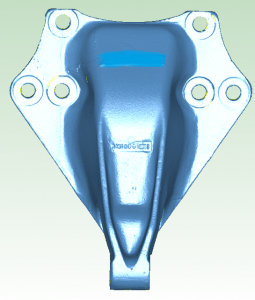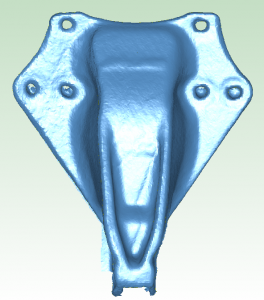Achievable accuracy depends on various factors such as
- Sensor resolution and accuracy
- ReconstructMe results are strongly linked to sensor accuracy. Accuracy tells you how how closely the output from a sensor will match the ‘true’ value. Unfortunately, the term accuracy is used differently among sensor manufacturers and therefore you can often find figures on the resolution of the sensor only. Resolution is the ability to resolve differences. Its the minimum theoretical difference it can spot. High resolution therefore means the sensor is able to resolve small differences. The accuracy of a system can never exceed its resolution. In practice the accuracy is much lower than the resolution.
- Camera tracking
- ReconstructMe tracks camera movements by evaluating differences between camera images. Therefore, if the target object does not offer any features to track (e.g planar objects), tracking will be faulty and so will be the resulting scan. Camera tracking is also effected by the amount of movement between two subsequent camera frames. The larger the movement the higher the chances for bad alignment.
As you probably have noted by now, it is hard for us to come up with a single number on the accuracy of the ReconstructMe, as it depends on many factors. However as a rule of thumb with most currently available sensors, ReconstructMe achieves under ideal environments an accuracy of 5-8 millimeters on a 0.5 meter part.
The following comparison stems from discussions about ReconstructMe accuracy. It compares a high quality structured light scan and ReconstructMe scan of the same object. Worst case deviations are 5mm around object borders.
If you accuracy you can achieve is far from the above, you might want to read about improving the quality of your results: How can I improve the quality of my scanning results?
Posted in: Scanning



